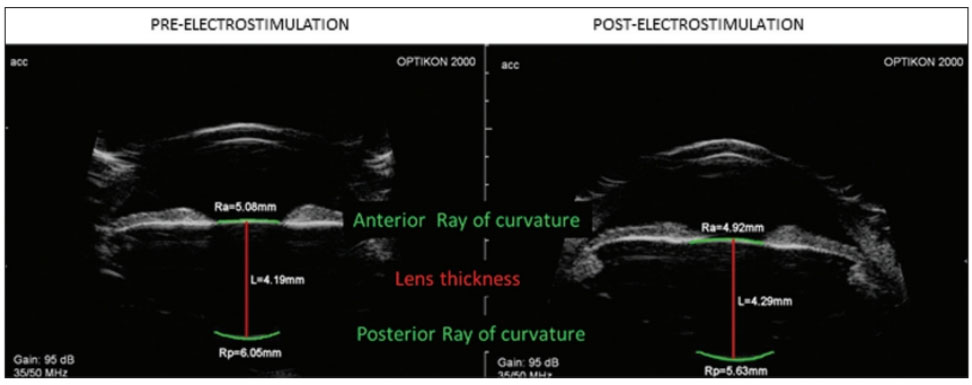

Presbyopia is the in-ability to comfortably focus on close objects due to aging. This is the most common physiologic alteration of eye-sight, affecting more than 1.2 billion individuals worldwide, and leads to a major impact on productivity among healthy adults.
Because presbyopia is aging of eyes, radical cure is impossible, and a complete pathophysiology is before dawn.
If the cause of the presbyopia is roughly divided scientifically, it is possible to divide it into the following three at present.
- Decrease in accommodation ability due to weakening of ciliary muscle strength by aging of ciliary muscles.
- Decrease in accommodation ability caused by lens hardening due to aging
- Decrease in the number of optic nerve cells due to aging
Unlike ametropic defects or refractive errors (myopia, hyperopia, and astigmatism), caused by genetic and environmental conditions that affect the shape of the eye, presbyopia does affect virtually every individual older than 50 or 60 years due to the progressive loss of the accommodation ability of the eye.
When increasing the refractive power of the lens (looking near), the ciliary body is tense and the chin small band relaxes. Then, the lens thickens by its own elasticity. As you get older, the lens becomes stiffer, and ciliary muscles with reduced muscle strength cannot be tense enough to thicken the lens. This is presbyopia.
Effectiveness
Our approach is that the revitalization of the accommodation system by stimulating the ciliary muscle to increase its potency so that it can over-come the higher resistance of the system (ciliary muscle and lens) that has become stiffer due to aging.
Pulsed electric stimulation is known to work for atrophic muscles, and therefore might also be effective on the ciliary muscle, we think. We describe a non-invasive and innovative method ( = Refresh Technology EW) to improve near vision, likely through restoring the accommodation mechanism through pulsed electric stimulation of the anterior segment of the eye to stimulate ciliary muscle contraction to restore accommodation.
The amplitude of refresh technology EW’s current parameters is slightly strengthened, and the treatment time is set to 40-60 minutes (usually 30 minutes), and the ciliary muscles are loaded and exercised.
Specifically,
- Intensity is slightly strengthened than DED or Eye Strain treatment (within a comfortable and painless range)
- treatment time is set to 40-60 minutes (usually 30 minutes)
- 6-10 times a month during 3 months
Reference
Example of preoperative (left) and postoperative (right) ultrasound biomicroscopy scan taken under accommodation showing an increased lens thickness (L) (+0.10 mm), a decreased anterior (Ra) and posterior (Rp) ray of curvature of the lens (-0.16 and -0.08 mm) resulting in improved accommodative response after the micro-electrostimulation of the ciliary muscle treatment.


